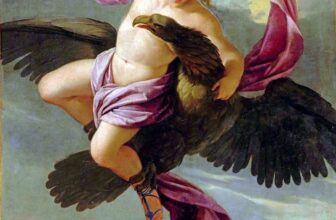
Hubert Robert: The French Painter of Romantic Ruins and Dreamlike Gardens
Few artists capture the poetic grandeur of time and decay quite like Hubert Robert (1733–1808), a French painter whose dreamy landscapes and romantic ruins epitomize 18th-century European elegance. His paintings invite viewers into serene, light-dappled worlds where classical architecture merges with overgrown gardens, and the splendor of antiquity meets the quiet passage of time. Known as “Robert des Ruines”, Robert of the Ruins, he became one of the most beloved and imaginative figures of his era, and his works remain highly collectible among connoisseurs of classical European art today.
This in-depth article explores Hubert Robert’s life, his artistic style, his most famous artworks, and how much Hubert Robert paintings are worth today in the art market.
Early Life and Education
Hubert Robert was born on May 22, 1733, in Paris, France, into a well-connected family serving the aristocracy. His father worked in the household of the Comte de Stainville (later the Duc de Choiseul), who would become one of Robert’s most influential patrons.
At the age of 21, Robert traveled to Rome in 1754 as part of the household of the French ambassador, the Duc de Choiseul. This experience profoundly shaped his artistic development. Rome was a treasure trove of ancient ruins, classical sculpture, and Renaissance masterpieces , the perfect environment for an artist fascinated by the intersection of architecture, history, and imagination.
In Rome, Robert studied under Giovanni Paolo Panini, the renowned Italian painter celebrated for his views of Roman monuments and architectural capriccios. Robert also befriended Jean-Honoré Fragonard, another young French artist studying in Rome, with whom he shared both a studio and a lifelong friendship.
The decade Robert spent in Italy would forever define his artistic voice. He became captivated by ruins, not just as historical remnants but as symbols of transience, nostalgia, and poetic beauty.
Return to France and Rise to Fame
When Hubert Robert returned to Paris in 1765, he brought with him a sketchbook filled with studies of ancient monuments and landscapes. His Italian experiences, combined with his gift for imagination, quickly won him recognition. That same year, he was accepted into the Académie royale de peinture et de sculpture, France’s highest artistic institution.
He soon gained the patronage of Madame Geoffrin, the Marquis de Marigny, and King Louis XVI himself. Robert was appointed Designer of the King’s Gardens and Keeper of the King’s Paintings, which allowed him to work on grand decorative commissions for the royal palaces at Versailles, Fontainebleau, and Louvre.
Robert’s art became immensely popular among aristocrats and intellectuals who admired his ability to blend architectural grandeur with natural beauty. His works reflected Enlightenment ideas about the cycle of civilization, the passage of time, and the sublime power of nature.
Artistic Style: Romanticism Before Romanticism
Although Hubert Robert is often grouped with Rococo painters for his light color palette and elegant sensibility, his work foreshadowed the Romantic movement of the 19th century. His paintings balance fantasy and realism, often depicting imaginary ruins that combine elements from different classical structures, such as the Colosseum, the Pantheon, or Roman aqueducts.
Robert’s signature compositions typically include:
Ruins of classical architecture, crumbling but majestic, bathed in golden light.
Lush greenery reclaiming man-made structures, symbolizing nature’s eternal renewal.
Figures, often peasants, shepherds, or travelers, providing scale and a sense of human presence.
Soft, atmospheric perspective, creating a dreamlike feeling of serenity and nostalgia.
His mastery of light and texture imbues his scenes with a timeless tranquility, evoking both admiration for human achievement and melancholy at its impermanence.
The Poetry of Ruins: Themes and Symbolism
Robert’s fascination with ruins was not merely aesthetic, it was philosophical. In the 18th century, ruins represented the fragility of empires and the cyclical nature of history. For educated Europeans who admired ancient Rome, ruins symbolized both the glory of the past and the inevitable decay of civilization.
Robert’s paintings capture this duality beautifully. The crumbling columns and arches in his canvases are not scenes of destruction, but of rebirth. Trees grow from fallen stones; people live, rest, and work among the remains of antiquity. His art suggests that life continues amid decay, and beauty persists even in ruin.
This poetic sensibility made Robert’s works resonate deeply with Enlightenment thinkers and, later, with Romantic artists like Caspar David Friedrich and J.M.W. Turner.
Most Famous Artworks by Hubert Robert
1. “Imaginary View of the Grande Galerie of the Louvre in Ruins” (1796)
Perhaps Hubert Robert’s most famous painting, this haunting masterpiece envisions the Louvre Museum itself in ruins, a bold and imaginative concept for his time. Painted during the turbulent years of the French Revolution, when the monarchy had fallen and the Louvre was being transformed into a public museum, this work is both prophetic and poetic.
In the painting, the vaulted ceilings of the Louvre’s Grande Galerie are collapsed, and classical sculptures lie broken amid debris. Yet figures still wander peacefully through the ruins, as if art and human curiosity endure despite the destruction. The piece is a meditation on the transience of power and the immortality of culture.
Robert also painted a companion piece, “Project for the Transformation of the Grande Galerie of the Louvre”, which imagines the same space intact and beautifully renovated. Together, these two works form a philosophical pair, creation and destruction, past and future, perfectly encapsulating Robert’s worldview.
2. “The Bathing Pool” (1777)
This serene painting shows elegant women bathing near a Roman-style fountain surrounded by lush greenery. It embodies the idealized harmony between human leisure, architecture, and nature. The composition, with its balanced light and fluid figures, represents the height of Robert’s Rococo elegance fused with classical romanticism.
3. “The Old Bridge” (1784)
In “The Old Bridge”, Robert depicts an ancient, half-ruined bridge over a tranquil river, with travelers and animals crossing beneath its arches. The painting reflects his fascination with the coexistence of the old and the new, the built and the natural. The soft, golden tones and atmospheric perspective make it one of his most lyrical works.
4. “The Waterfall and the Temple of Vesta at Tivoli” (1760s)
Based on his Italian sketches, this painting captures the famous Temple of Vesta in Tivoli, perched above cascading water. The temple, partially shrouded in mist and greenery, epitomizes Robert’s talent for transforming real places into poetic visions of antiquity.
5. “The Artist in His Studio” (1765)
This introspective work presents Robert himself at his easel, surrounded by canvases of ruins and architectural models. It reflects his identity as both artist and architect, and as a dreamer fascinated by the intersection of imagination and memory.
Hubert Robert During the French Revolution
The outbreak of the French Revolution (1789) brought upheaval to all aspects of French society, and artists were not spared. Despite his ties to the monarchy, Hubert Robert managed to navigate the dangerous political climate with remarkable resilience.
In 1793, however, he was imprisoned during the Reign of Terror for several months, accused of royalist sympathies. While in prison, he continued to sketch and paint, creating some of his most poignant works. One famous piece from this period, “Self-Portrait in Prison,” shows the artist calmly painting in his cell, a powerful testament to his devotion to art even amid chaos.
After his release, Robert played a role in reorganizing the Louvre Museum as a national institution, contributing to its transformation into the world’s greatest art museum. His experience of revolution and renewal further deepened the themes of ruin and regeneration in his later works.
Hubert Robert’s Legacy and Influence
Hubert Robert’s influence extended far beyond his lifetime. His romantic sensibility inspired generations of artists, architects, and garden designers. The picturesque gardens of the 18th century, filled with artificial ruins, temples, and grottoes, were directly shaped by his paintings and designs.
His vision of decay as beauty and ruins as memory resonated deeply with later Romantic artists, especially in England and Germany. Painters like John Constable, Turner, and Friedrich echoed his atmospheric treatment of light and mood.
Today, art historians regard Hubert Robert as a transitional figure between Rococo grace and Romantic emotion, a master who bridged two major artistic movements with elegance and imagination.
How Much Is a Hubert Robert Painting Worth Today?
The market for Hubert Robert artworks remains strong, particularly among collectors of 18th-century French art and classical landscape painting. His works are represented in major museums worldwide, including the Louvre, the Metropolitan Museum of Art (New York), and the National Gallery (London).
Auction Prices and Value
Original oil paintings by Hubert Robert can sell for anywhere between $100,000 and $3 million USD, depending on size, subject matter, and provenance.
Smaller works on paper (such as gouaches, ink sketches, and drawings) typically range from $10,000 to $100,000 USD.
His most famous paintings, particularly those depicting Roman ruins or imagined architectural scenes, achieve the highest prices.
For example:
“A Capriccio of Classical Ruins” sold at Christie’s London for approximately $1.8 million.
“The Waterfall and the Temple of Vesta at Tivoli” reached over $1 million at auction.
“Imaginary View of the Louvre in Ruins” is considered priceless, as it belongs to the Louvre Museum’s permanent collection.
The demand for Hubert Robert art has grown steadily, driven by renewed interest in neoclassical and Romantic painters. His timeless themes, beauty, memory, and the grandeur of decay, continue to appeal to modern collectors seeking depth and historical resonance.
Why Collectors Love Hubert Robert
Timeless Beauty: His paintings blend architectural splendor with poetic naturalism, offering both intellectual and aesthetic pleasure.
Historical Importance: Robert captured the spirit of the Enlightenment and the birth of modern Romanticism.
Decorative Elegance: His works harmonize with both classical and contemporary interiors, making them versatile pieces for collectors.
Investment Value: The scarcity of major works and consistent demand have kept auction prices strong.
For collectors of classic European art, owning a Hubert Robert piece is a way to possess a fragment of Enlightenment culture, a meditation on civilization itself.
Where to See Hubert Robert’s Art Today
To experience Hubert Robert’s masterpieces in person, visit these world-class institutions:
Musée du Louvre (Paris, France) – Home to “Imaginary View of the Grande Galerie of the Louvre in Ruins” and numerous architectural capriccios.
Musée des Beaux-Arts de Bordeaux – Features “The Bathing Pool” and several garden landscapes.
The Metropolitan Museum of Art (New York) – Exhibits “The Old Bridge” and other classic views.
The National Gallery (London) – Houses works depicting Italian ruins and Roman temples.
The Hermitage Museum (St. Petersburg) – Contains an extensive collection of Robert’s architectural fantasies.
Interesting Facts About Hubert Robert
Nickname: Known as “Robert des Ruines” due to his lifelong obsession with depicting ruins.
Garden Designer: He contributed designs for Marie Antoinette’s gardens at the Petit Trianon in Versailles.
Imprisoned Artist: Continued painting during imprisonment, producing some of his most introspective work.
Prolific Output: Created over 1,000 paintings and 10,000 drawings throughout his career.
Dual Vision of the Louvre: Painted both the imagined ruins of the Louvre and its restored grandeur, symbolizing destruction and rebirth.
The Enduring Allure of Hubert Robert
Hubert Robert’s art captures a universal truth: all things, no matter how grand, are subject to time. Yet within that decay lies beauty, reflection, and renewal. His romantic ruins and atmospheric gardens continue to speak across centuries, reminding us that art outlives empires.
For modern audiences, his work embodies the poetry of impermanence, a vision both nostalgic and timeless. Collectors prize his paintings not only for their elegance but for their philosophical depth, and institutions around the world preserve his legacy as a cornerstone of 18th-century art.
Whether gazing upon a crumbling temple bathed in golden light or a tranquil garden where nature reclaims stone, we feel the quiet magic of Hubert Robert’s imagination, a master whose ruins will never fade.




